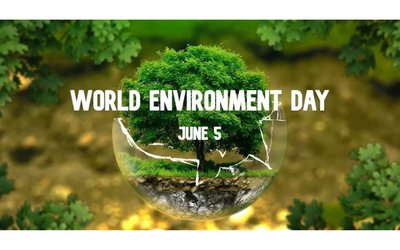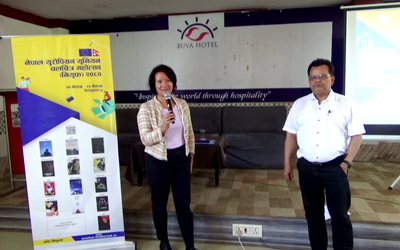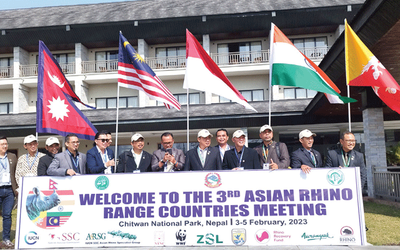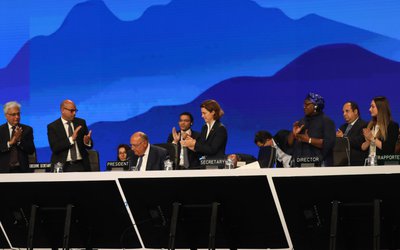After 23 years of enforcement of the Environment Protection Act (EPA, 1996) and Environment Protection Rules (EPR, 1997), EPA (2019) has entered into force on 18 October 2019 (1 Kartik 2076) after its authentication by the President of Nepal on 11 October 2019 and by repealing the 1996 Act. I flagged some of the environmental assessment (EA)-related provisions in May 2019 as contained in the draft Environment Protection Bill to have 'conceptual clarity' in some provisions to make the legislation development-friendly (https://www.spotlightnepal.com/2019/05/21/environment-protection-bill-2019- heavy-punishment-non-compliance/ and https://nagariknews.nagariknetwork.com/news/78946/#/.XP iU EM9ZuhI.twitter). As the Government will soon release EPR (2019) to implement the EPA (2019), the draft Rules need to clarify some of the 'unclear' issues for the effective enforcement of the environmental laws and contribute to make the socio-economic and infrastructure development projects environment-friendly and sustainable to attain the ultimate goals of making Nepal 'prosperous and happy'. The following issues require rectification to make the legal regime 'simple and user-friendly' to promote economic and infrastructure projects.
Also flagged in May 2019, EPA (2019) includes a brief environmental study, scoping and terms of reference, alternative analysis, and environment management plan, previously addressed through EPR (1997). Now onwards, any amendment on these procedural elements should be proposed to the Parliament. The legal regime on the environment does not recognise the 'consultant' and all categories of environmental study/EA reports 'must be owned' by the proponent. Quality control of the Environmental Study Report (ESR) is the responsibility of the proponent and the approving agency. The proponent may simply engage 'consultant' to prepare such ESRs. In general understanding, proponent may engage consultant to prepare ESRs for the proponent as 'lawyers' advocate in favour of its client to win the case. The EPA (2019) has provisioned to punish the consultant even in case the proponent changes contents and interpretation of the ESRs (drafted by the consultant) before submission for approval.
The EPA (2019) includes a report on brief environmental study, IEE and EIA under the 'ESR' whereas these 3 reports are under 'environmental examination' in the Forest Act (2019). It means 'study' and 'examination' should be understood synonymously. The Act also creates confusion in carrying out ESR or Strategic Environmental Analysis (SEA) of a project (as per definition of proposal and SEA). Environmental community understands SEA as the Strategic Environmental Assessment which is primarily used to assess impacts of a 'policy, plan and programme' on the environment. Based on 2019 EPA, 'analysis' and 'assessment', 'study' and 'examination' and 'prescribed' and 'concerned' should be understood synonymously.
In technical understanding, environmental scoping is carried out to know issues and concerns that should be studied during the EIA study and procedural guidelines and manuals are used to prepare such report. The proposed Schedule 5 (format) of the Scoping Document urges to include methods and tools that should be employed during the scoping. This raises questions 'what should be included in the Rules, guidelines and manuals. The proposed Scoping format limits flexibility and might not be appropriate to several projects that require EIA study. Similar effort is noticed in the format of brief environmental study and IEE reports. It does not provide opportunity to include proposed implementation of the measures to augment beneficial impacts and reduce adverse impacts in a planned manner. The proposed ToR for EIA study looks like a report. It gives the impression that Nepal's development projects are of similar nature and will be implemented in similar geographical/ecological areas. The proposed manpower for report preparation should be decided during the issuance of the ToR, taking into consideration the size, nature and location of the project, including issues prioritised for EIA study. The proposed IEE report format is more appropriate to the industry sector projects. Over two-decades of technical experience dictates to change IEE report format that could be used for any sector project and can be implemented in any location/geographical region.
The EIA report format provides maximum number of pages for different chapters and urges to prepare EIA report of any project within 120 pages (core part), excluding references and annexes. It sounds good but needs more clarity on technically more important chapters to address environmental impacts and make the project environment-friendly and sustainable. If not, it might create problems as the EIA Review Guideline for the Forestry Sector (2002). Although, ToR of EIA provides instruction to prepare environmental management plan (EMP), EIA report format is silent on EMP. Interestingly, the Rules instruct to prepare any ESR in Nepali language in Unicode. It may limit to address EA-related requirements of the development partners such as also of the World Bank and Asian Development Bank. The IEE Manual for Forestry sector (2004), published in Nepali, may contribute to some extent to prepare ESRs.
In case of Strategic Environmental Analysis, the proposed Schedule 14 provides criteria and principles. The role of the Ministry of Forests and Environment (MoFE), having responsibility for environmental matters based on the Business Allocation Rules (2018), is sufficiently diluted. The 'concerned ministry' has been proposed to prepare a list of policy, programme and project that require SEA and submit to the Council of Ministers. The draft Rules also propose the Council of Ministers to approve the SEA report. It has raised the fundamental question on the contribution of SEA report in making the proposed policy, plan and programme environment-friendly. In technical understanding, EAs are carried out before the finalisation and decisions of any policies, plans and programmes, and project reports. For example, IEE and EIA should contribute to finalise the detail project report (DPR) and SEA should be carried out before the approval of any policy, plan or programme. The Rules is silent on such 'core understanding', including formats of scoping, ToR and SEA report.
The EPA (2019) and its draft EPR provisions for environment management plan (EMP) for all ESRs but proposed Schedules are silent on the content of EMP. The draft EPR also provisions to start project implementation within two years of the approval of ESR and if project implementation is not started within two years, proponent should get re-approval of ESRs. The draft Rules does not elaborate provisions to conduct environmental auditing although Section 12 of the EPA has provisioned for updating environmental auditing report of the proposal within six months after two years of the service provided by the proposal. It means environmental auditing should be carried out within six months. As auditing is the responsibility of the Government, let us hope that Government will comply with this legal provision. In technical understanding, environmental auditing is carried out to assess actual environmental impacts, accuracy of prediction (impacts identified, predicted and evaluated), compliance and effectiveness of augmentation or mitigation measures, and functioning of the environmental management plan and/or environmental monitoring with 'documented evidences'.
The draft EPR (2019) also includes Schedules on list of sector-specific projects that require brief environmental study, IEE or EIA. It has followed the 'threshold, 'sensitive area and 'investment' criteria as the previous EPR (1997). Few proposals are 'open' for environmental study such as translocation of different species of imported wild animals, small construction activities in protected and environment conservation areas, proposal related to access, utilisation and benefit sharing of genetic resources, establishment of weather station and radar in forest area etc. Similar non-threshold criteria are used for IEE and EIA studies. It opens avenues for 'subjective interpretations' and may be interpreted on case-by-case basis. All types of studies require 'public hearing'. The draft Rules limit time, within two years of approval of the scoping document and the ToR, to prepare an EIA report of any project whether environmentally-sensitive small project or large-scale project of general category. Experience indicates that 'extra effort' will be required to prepare an EIA report of large scale project.
No doubt, issues, concerns and impacts depend upon the size, nature and location of the project. Benefit enhancement and adverse impacts mitigation measures are impact- and location-specific. In a nutshell, it gives the impression that Nepal's development projects will be implemented in forests or passes through the forests. Aspects covered in Schedules related to scoping, ToR or reports are generally used in training and academic courses as examples. In this context, these Schedules might pose complexities during preparation, review and approval of ESRs. Many issues might be like that of approved EIA report of Nijgadh International Airport. Hence, it is urgent to redefine 'unclear words', avoid/minimise complexities in the Rules, and simplify report formats to ensure that ESR contributes to make development policies, plans, programmes, and projects environment-friendly and sustainable and to enjoy with benefits from this tool as in other countries.

Batu Uprety
Former Joint-Secretary and Chief of Climate Change Management Division, Ministry of Environment (then), and former Team Leader, National Adaptation Plan (NAP) formulation process. E-mail: upretybk@gmail.com
- Dialogue On Mountains And Climate Change Planned
- Apr 19, 2024
- Institutional Response And Leadership on Climate Negotiations
- Mar 28, 2024
- The Wire Without A Current
- Mar 20, 2024
- Call For Degazetting the Shivapuri-Nagarjun National Park
- Feb 08, 2024
- Advancing Need-Based Adaptation Options
- Jan 14, 2024
















